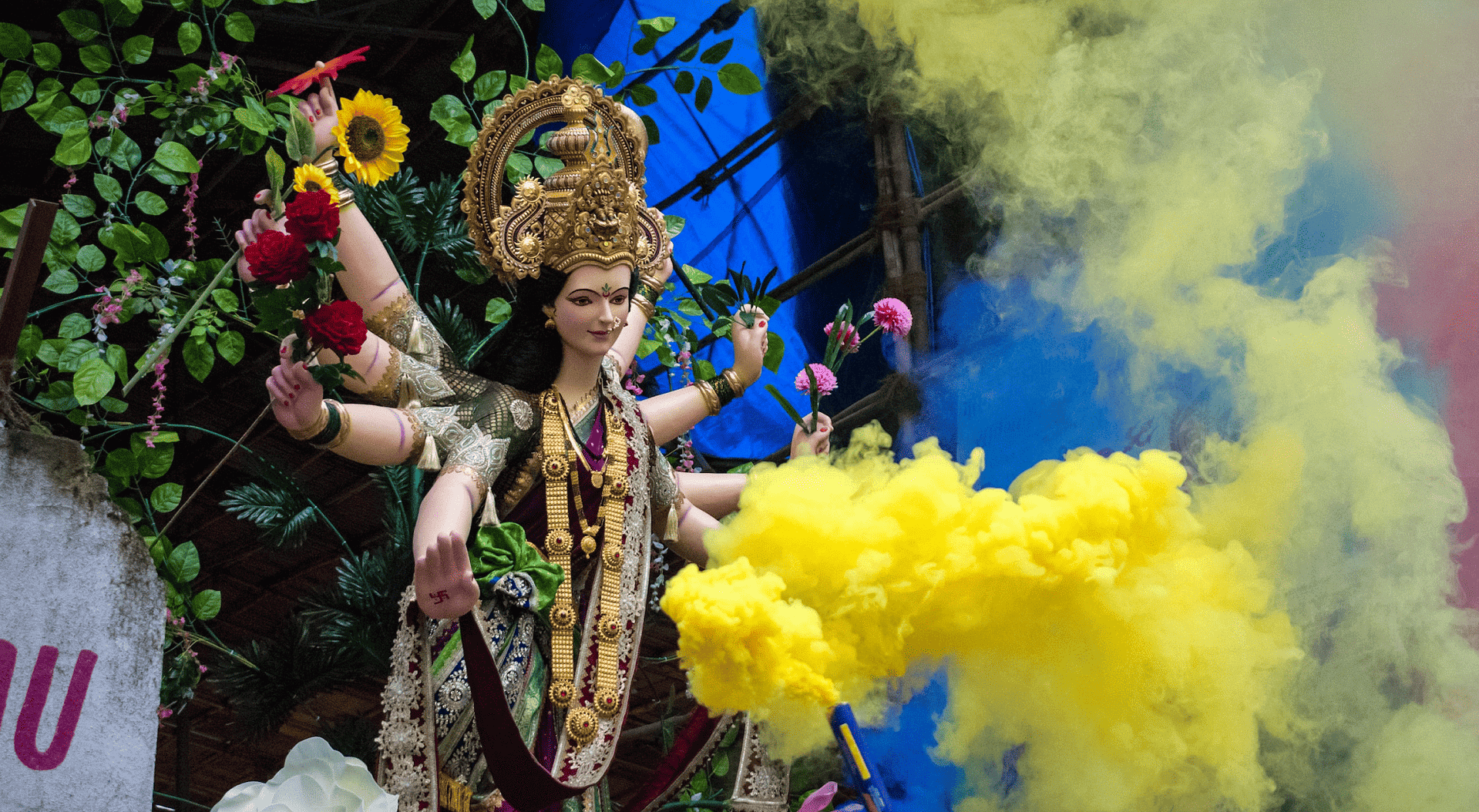Navratri Meaning
Navratri means “Nine Nights” and is celebrated to honor the Mother Goddess Durga. During this time, Goddess Durga is worshiped in all her divine forms like Goddess Durga, Goddess Kali, Goddess Saraswati and Goddess Lakshmi. It is one of the most important Hindu festivals and is celebrated twice a year.
One of them is at the beginning of summer, in March or April, and is called “Chaitra Navratri”. The second Navratri is celebrated in September or October and is called ‘Sharad Navratri’.
Navratri is a festival with colorful costumes, passionate dances and of course, 9 nights are very important for Goddess Durga. These 9 nights have a special meaning.
The vast nation of India has different beliefs based on the legends they have heard about this festival, but they all share the same story: life lesson: “Good always wins over evil.” When Durga defeated the evil Mahishasura. That’s when we see the different meanings of the same festival and how different meanings they have in the lives of Indians. Overseas Indians equally participate in the preparations for this auspicious occasion and come together to perform Garba (a famous dance during Navratri) and distribute sweets.
Navratri Legends
There are many legends surrounding Navratri celebrations.
According to popular legend, there was a very powerful demon named Mahishasura. With the grace of Lord Shiva, he became immortal and no weapon could kill him. He then started killing innocent people on earth. Goddess Durga was born to kill this evil demon.
The combined power of Brahma, Vishnu, Shiva and all other gods created Goddess Durga. There was a war between Goddess Durga and Mahishasura that lasted for nine days and on the tenth day the goddess killed the demon.
Navaratri marks the battle between Goddess Durga and Mahishasura.
According to another legend, Lord Rama worshiped all nine forms of Goddess Durga in order to get her blessings to kill the demon Ravana. He worshiped god for nine days. On the tenth day of Sharad Navratri, i.e. the day when Lord Rama killed Ravana and killed him, we celebrate this day as Dussehra or Vijay Dashmi.
The 9 nights and 10 days of Navratri have special colors and stories. People follow them to understand spiritual practices and pray to Goddess Durga. These represent 9 different incarnations of the goddess.
Day 1: Durga as Shailaputri
The color of this day is grey shows action and power. This day is dedicated to the daughter of the mountain. She is riding a bull, holding Trishul in his right hand and a lotus flower in his left hand. He is also said to be the incarnation of Mahakali.
Day 2: Durga plays Bramha Charini
Today’s color is orange, symbolizing strength and power. This is the day when Goddess Parvati became her unmarried self as Sati.
Day 3: Durga plays Chandraghanta
This day is white, plain and comforting for all souls. Parvati received this name after her marriage to Lord Shiva and it was placed a half-moon on her forehead.
Day 4: Durga as Kushmanda
The fourth day is red, it shows power. The incarnation of the goddess celebrates her as the creative power of the world. She has eight arms and sits on a Tiger.
Day 5: Durga as Skanda Mata
Blue is the color of the fifth day celebrated for Kartikeya’s mother. This color indicates the mother’s unimaginable strength when her child is in danger. The goddess has four arms and protects her children by sitting on a lion.
Day 6: Durga as Katyayani
The yellow color of this day represents the strength and courage possessed by Goddess Durga. She is a warrior and very dangerous. She is a form of Goddess Mahalaxmi.
Day 7: Durga as Kalaratri
The color of the day is green. This form of Durga is the ferocious. According to legend, the goddess took off her fair skin to kill a demon. She was dressed in white and his eyes were black with anger.
Day 8: Durga as Mahagauri
The incarnation of Goddess Durga symbolizes peace and wisdom, hence the color of Malachite green radiates optimism.
Day 9: Durga As Sidhidatri
Navmi is celebrated to commemorate the goddess who sits on a lotus flower and prays to everyone. The color purple on this day is thought to express appreciation for the beauty of nature.




